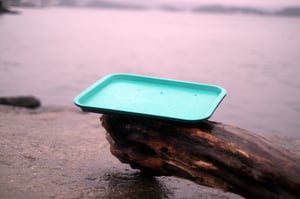Circular products are at the heart of the circular economy, designed with sustainability, longevity, and recyclability in mind. These products challenge the traditional linear approach of production and consumption, aiming to minimize waste and maximize resource efficiency.
What are Circular Products?
Circular products are designed to be part of a closed-loop system, where they can be reused, repaired, remanufactured, and recycled.
Key characteristics include:
- Durability: Built to last, reducing the need for frequent replacements. Ellen MacArthur Foundation - Circular Design Principles
- Modularity: Designed for easy disassembly and repair. European Commission - Modular Design for Sustainability
- Recyclability: Made from materials that can be efficiently recycled and repurposed. World Economic Forum - Circular Economy for Plastics
Benefits of Circular Products:
- Waste Reduction: By keeping products and materials in use for longer, circular products significantly reduce waste. WRAP - Circular Products
- Resource Efficiency: Maximizing the use of materials and minimizing the extraction of raw resources. Ellen MacArthur Foundation - Resource Efficiency
- Economic Opportunities: Creating new business models and revenue streams through product-as-a-service, leasing, and sharing. Circle Economy - Circular Business Models
Examples of Circular Products
- Modular Electronics: Devices designed for easy upgrade and repair, extending their usable life. IFixit - Modular Electronics
- Sustainable Packaging: Packaging solutions that are reusable, recyclable, or compostable. Ellen MacArthur Foundation - Sustainable Packaging
- Eco-Friendly Textiles: Clothing and textiles made from recycled or sustainably sourced materials. Textile Exchange - Sustainable Textiles

Designing Circular Products
Designing circular products involves several key strategies:
- Eco-Design: Incorporating environmental considerations into the design process from the beginning. Ellen MacArthur Foundation - Eco-Design Principles
- Life Cycle Assessment (LCA): Analyzing the environmental impact of a product throughout its entire lifecycle. European Commission - Life Cycle Assessment
- Material Innovation: Using sustainable materials that are safe and recyclable. StartUs Insights - Material Innovation in Sustainability
The Role of Technology
Advancements in technology are crucial for developing and scaling circular products. Innovations such as 3D printing, digital product passports, and advanced recycling technologies enable more efficient and effective circular practices. McKinsey & Company - Technology in the Circular Economy
Conclusion
Circular products represent a fundamental shift towards sustainable production and consumption. By designing products that prioritize longevity, repairability, and recyclability, we can move closer to a truly circular economy and a more sustainable future.


